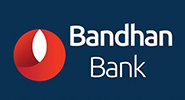
Positive Psychology are often a big contributor to employees’ happiness at work. It focuses on what makes life most worth living. It considers how people can build the best life they can for themselves by including the positive aspects and minimising the worst. Positive Psychology studies have demonstrated how positive emotions are linked to numerous benefits including improved health, well-being, longevity, and a greater quality of life.
Most of the time, positive psychology comes into play starting as early at the preemployment stage. Human Resources departments have special training and development sessions to assess not only an employee's paper-based skills, but also personality and non-work-related skills. The idea is to cultivate a workplace of diverse ideas and personalities, where employees are valued for who they are, as well as what they will contribute to the organisation.
Creating a state of happiness in the workplace is mainly about controlling our attitudes. Employees, managers, and leaders all have a task to play in workplace happiness. The PERMA model developed by Martin Seligman identifies five essential elements of psychological well-being: Positive Emotions, Engagement, Relationships, Meaning, and Accomplishment. These ideas can be put into practice within the workplace to improve overall employee happiness and well-being.
As we are going in these COVID times most of the employees are working from home. Driving one’s team seems to be a herculean task, at times as negativity seeps in. But if the Leader keeps his positivity at the helm, he can sail through this rough patch and get the best out of his team. A small example, Mr Kumar is a leader, who kept pushing the positive thought of pursuing the client though there was to be a price drop for the order. At one time they had given off the hope of receiving the order due to COVID crisis. But this leader kept his positivity on, that they would get the order. His positivity echoed through his team, which eventually lead them to receive the order after a lot of deliberations and sustained rounds of negotiations. Positivity is contagious.
Positivity can be stimulated by expressing appreciation and being grateful. To foster more appreciation within the workplace, organisations can develop programs or processes through which employees can express their gratitude for others. For example, an organisation can encourage employees to express their appreciation by nominating a colleague who did something helpful. All the names can then be collected along with the various comments and can be posted on the notice board. Managers who make it a habit to send just one e-mail a day recognizing someone’s contribution, or executives who start meetings by focusing on positives or outstanding contributors, often find that a more positive tone follows naturally. Feeling appreciated, is usually the first step to being truly satisfied on the job.
When employees are engaged in work that uses their strengths, they will feel a sense of accomplishment. This sense of accomplishment drives higher levels of motivation, satisfaction, and happiness at work. Organisations can help employees identify their strengths through assessing their skills and can modify responsibilities to help employees work within their strength areas. Organisations can highlight accomplishments by sharing successes. Small successes can be a part of daily meetings, whereas larger successes may warrant a special event. Employee of the month is a quite common practice done by many organisations. It is energising for employees to both share their successes and celebrate successes of their colleagues. In 2012, Gallup conducted a very large study to ascertain if high employee engagement really made a difference. Gallup found that businesses that had engaged employees were two times as likely to be successful as a business. Those who had the most engaged employees fared even better– they were four times as likely to achieve more success.
Employees are more likely to be engaged at work when companies offer learning and development opportunities. A focus on learning and development can also increase retention. Conducting frequent training and development sessions keep the employees motivated and keep abreast with the latest technologies. Training will assure that an employee will be able to give their optimal performance. Training and development help to meet the employees' needs for continuous growth and career development. Here is a list of few Learning and Development programmes by companies.
Axis Bank: The leading private sector bank recently collaborated up with Coursera to offer world-class learning programmes to its employees. The course offers training programs in subjects such as data analytics, leadership, innovative thinking and more. All the Axis Bank employees are encouraged to take up the course.
Capgemini: At Capgemini they believe in nurturing the employees throughout their career with the company, since the time they are hired. They train the employees to compete in a highly competitive marketplace that is driven by ever-changing technological innovation. They have initiatives like Group Learning & Development (Group L&D) to prepare employees to have a different angle to the clients’ business needs.
Infosys: Infosys has power programmes to upskill its employees. It was one of the first companies to offer its employees a hike if they reskilled in the latest technology. Its bridge programmes skills young employees who have spent at least three years in the organisation to get trained in areas such as consulting, full-stack development, power programming, tech architecture and more
Oracle: This company offers a wide range of technical and professional courses in the form of online learning. They also offer reimbursement for selected job-related training and education. Oracle encourages job-related advanced degree and continuing education while being an employee.
TCS: TCS runs multiple initiatives to assist employees grow in their careers. Some of these programmes are Career Hub, that provides TCS employees with mentoring services. They also run Inspire, a specialized program that provides fast-track career to high-potential employees.
Physical activity has always been referred to as a stressbuster, and companies who include fitness and exercise as a part of their corporate perks usually register higher when it comes to work/life balance satisfaction. For some companies, this is as simple as offering discounted gym memberships or sponsoring wellness fairs in lobby or conference space. Organisations like google, Microsoft, do have fitness programs for their employees. Thus, keeping employees motivated and engaged in their workplace.
Relationships are the key to health, happiness, and longevity. In the workplace, positive relationships are linked to increased productivity and better stress management. Organisations can facilitate employee connections by encouraging employees to be social internally as well as outside work. Team building events, group lunches, and including a few minutes of casual conversation before or after meetings are all easy ways to encourage more social connections. Organising sports events also facilitates in team building activities.
Work becomes more meaningful when employees can see how their efforts are impacting others within the business or its customers. It is human nature to want to have an impact on the lives of others. When an organisation can clearly show employees the result of their efforts, it can make work more rewarding. Every 6 months, or maybe even quarterly, present the most important issues in the company and the actions taken to address those issues. Involve the team in planning ahead, assessing opportunities and coming up with improvement ideas for the business strategy.
Today’s workforce changes jobs more often, and fostering corporate loyalty is a crucial part of positive psychology. A worker who feels that his company has invested in his development and cares about his progress is usually more productive, as well as more likely to stay on, than one who feels that he is just another worker. Establishing mentoring relationships for new hires is one of the ways to start fostering this sort of worker-employer camaraderie, right from the beginning. Thereby providing more meaning to their work.
“Increasingly, management experts view mentoring not only as a one-on-one relationship but as a component of social networking, where protégés, also referred to as mentees, gain valuable knowledge by interacting with many experienced people,” the University of Pennsylvania’s Wharton School reported. “It's a relationship where one can let one's guard down, an area where one can get honest feedback, and an area, ideally, where one can get psychological and social support in handling stressful situations,” said Katherine Klein, a Wharton management professor. 70 % of fortune 500 companies are implementing mentoring programs to name a few are Caterpillar, Schneider Electric, General Electric, Fidelity Investments. They are following this positive psychology exercise to retain their talent and meet the needs of their employees.
Goal setting is a crucial part of productivity and happiness. Goals provides employees with a sense of purpose, engagement, and motivation. While goal setting and achievement is important, employees must also enjoy in the process. When goals are connected to personal values and strengths, employees will enjoy the journey and perform better. Most businesses require at least some degree of employee creativity or innovation. When employees are allowed and encouraged to share their thoughts, business processes can become more streamlined, new products can emerge, and communication can improve. Workers who feel their voices are being heard are usually happier overall. “Offering as little as thirty minutes of work time a week for exploratory thought could send the message that their creativity is valued, no matter when, where, or how ideas are conceived.”
By following the PERMA model of Positive Psychology, organisations can create an engaged and motivated workforce that is a positive force for happiness throughout the organisation.
To summarize it up, in most cases, feelings of happiness are contagious, what starts with one soon spreads to a department, a division, or an entire office. Thereby, a whole company’s attitude has changed. The results are usually as clear in person as they are to be seen in the bottom line.
Companies that have experimented with training and development exercises using positive psychology have largely found the initial time investment well worth the cost. Employees are typically happier when they feel valued and revered, and this usually translates into profits. Companies that embrace positive psychology typically do so to create balanced and harmonious office environments, where individuals and to-do lists work seamlessly together. The financial gains are a benefit, certainly in the long run.


It is always a joy to hear how our work has positively impacted them and how our assessments have helped in finding the right people.

“ It is crucial that validating the quality of the candidates in recruitment. 9 Links is a service that we can confidently say does that. 9 Links online assessment precisely giving us the right candidates to pick and proceed on recruitment...

We have used 9 links psychometric tool in our Campus Placement Programme.The tool has helped us to identify right candidate as per our organization requirements...

" We have just started using it. It differentiates various personalities and helps in decision making. The clarity on its precision level will be gathered over a period of time...

" Counselling test curated for NES has been very useful in identifying the skill sets and allotting appropriate job fitment to students as per their quotients. Multilingual tests developed by considering various key...

“It is indeed great pleasure in my part to share complementing note to you & your team. Needless to say 9 Links is one of the best organization to conduct skill gap analysis through assessment of Cognitive skills..
Get Insights into latest developments in HR industry and psychometric assessments.